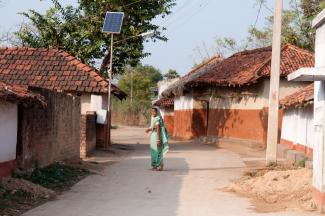Green power
Behind schedule

Over March and April, the Covid-19 crisis held the country in its grip. Even before, things were not going smoothly though. One of India’s promising solar-power producers was gasping for breath. The management explained its plight with “a slowing economy, inconsistent policy implementations, unfavourable trade policies and liquidity crises”.
India’s decarbonisation goals indeed seem distant now. The Ohio-based Institute for Energy Economics and Financial Analysis (IEEFA) has described progress as “non-linear – two steps forward, one step back”.
A fast transition to the kind of green infrastructure that would protect human health, safeguard ecological sustainability and drive economic growth, however, requires a predictable investment environment. Investors want to be able to calculate risks.
Today, coal remains the centrepiece of India’s energy supply. It accounts for about 60 % of electricity generation and other fossil fuels for another 20 %. A the same time, Indians emit about 80 % less carbon per capita than Germans, showing that they consume much less energy.
Solar power was meant to illuminate India’s route to clean-energy self-sufficiency with a generation capacity of 100 gigawatts (GW) by 2022. That would have required $ 100 billion worth of investments. That has not quite materialised. The current solar capacity is a mere 32 GW. Multiplication by the factor three is not feasible within two years. One target for 2022 is 40,000 GW of solar roof-top capacity, but India is two to four years behind schedule, according to the IEEFA.
Nobody questions India’s enormous potential, but making grand promises is easier than keeping them. The administrative and financial constraints are worrisome. Trade duties on solar panels from China have slowed down implementation, but they proved ineffective in terms of protecting domestic producers. The introduction of the new goods and services tax was disruptive too. It is basically a value-added tax (VAT) with six different brackets. As far as renewables are concerned, a major problem is that different brackets apply to different components. Intellectual-property rights and access to technology are other hurdles.
Various delays triggered a downward spiral. Tim Buckley from IEEFA says the lost momentum most likely puts the 2022 targets out of reach. Apart from 100 GW capacity for solar power, they include 60 GW for wind power, ten GW for biomass power and five GW for hydro power from small dams.
The target for the financial year 2029/30 is 450 GW of renewable generation capacity for the national grid. In principle, that is feasible. Experts see a potential for generating 300 GW of wind power alone at 100 meters above ground level. Late last year, not even 37 GW had been installed.
The IEEFA points out that suppliers who feed renewable power into the national grid get 2.43 rupees to three rupees per kilowatt hour. That is 25 % to 33 % below the tariff for coal-based power. The financial incentives are thus not set in a way that would accelerate investment in renewables, though those responsible for grid-related expenditure certainly appreciate cheaper power.
Another critical aspect is energy storage. The sun does not always shine and the wind does not always blow. For the nation to rely on renewables, energy storage will be key. There are emerging options, and costs are declining. However, where there should have been fast-paced action, there is hesitation and even lethargy. Even the national parliament’s energy committee has expressed grave concern because targets are not being met. Covid-19 can only worsen the delay.
For several reasons, India must not mess up the energy transition. With the world’s third largest economy (measured in purchasing power parities) and a population of soon 1.4 billion people, its success is of global relevance. According to the BP Energy Outlook 2018, India will overtake China as the largest growth market for energy in the course of this decade. India needs energy – and solutions must be sustainable.
Aditi Roy Ghatak is a Kolkata-based business journalist.
aroyghatak1956@gmail.com










